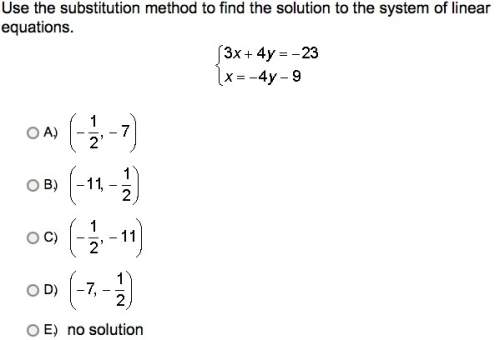
Mathematics, 19.01.2021 19:40 jdkrisdaimcc11
Ball bearings are manufactured with a mean diameter of 5 millimeters(mm). Because of variability in the manufacturing process, the diameters of the ball bearings are approximately normally distributed, with a standard deviation of 0.02 mm.
(a) What proportion of ball bearings has a diameter more than 5.03 mm?
(b) Any ball bearings that have a diameter less than 4.95 mm or greater than 5.05 mm are discarded. What proportion of ball bearings will be discarded?
(c) Using the results of part (b), if 30,000 ball bearings are manufactured in a day, how many should the plant manager expect to discard?
(d) If an order comes in for 50,000 ball bearings, how many bearings should the plant manager manufacture if the order states that all ball bearings must be between 4.97 mm and 5.03 mm?

Answers: 3


Another question on Mathematics

Mathematics, 21.06.2019 15:00
What is the length of the segment joining the points at (4,5) and (6,-2) round to the nearest tenth if necessary
Answers: 1

Mathematics, 21.06.2019 17:00
Simone claims the initial value and y-intercept are the same thing on a graph. is she correct? if you know that a line has a slope of and a y-intercept of 7, what is the equation for that line in slope-intercept form?
Answers: 1

Mathematics, 21.06.2019 20:10
Which ratios are equivalent to 10: 16? check all that apply. 30 to 48 25: 35 8: 32 5 to 15
Answers: 1

Mathematics, 21.06.2019 23:00
Could someone me with this question i’ve been stuck on it for 20 minutes
Answers: 1
You know the right answer?
Ball bearings are manufactured with a mean diameter of 5 millimeters(mm). Because of variability in...
Questions


Social Studies, 07.10.2019 12:20

Chemistry, 07.10.2019 12:20


Biology, 07.10.2019 12:20

Social Studies, 07.10.2019 12:20

Mathematics, 07.10.2019 12:20

Mathematics, 07.10.2019 12:20




Mathematics, 07.10.2019 12:20

Mathematics, 07.10.2019 12:20

Chemistry, 07.10.2019 12:20

Mathematics, 07.10.2019 12:20




Mathematics, 07.10.2019 12:20

Mathematics, 07.10.2019 12:20

 and standard deviation
and standard deviation  , the zscore of a measure X is given by:
, the zscore of a measure X is given by:













